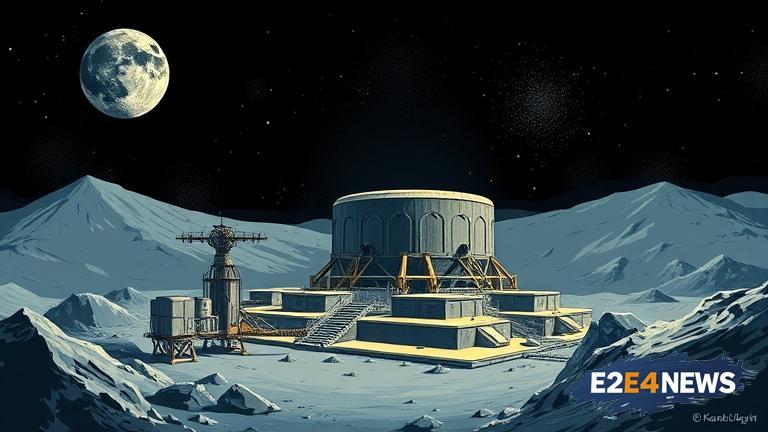The United States is embarking on an ambitious project to build a nuclear reactor on the Moon, with the goal of establishing a sustainable presence on the lunar surface. This initiative is a collaborative effort between NASA and the US government, with the target of completing the reactor by 2027. The nuclear reactor will provide a reliable source of energy for future missions, enabling the US to maintain a consistent presence on the Moon. The project is part of a broader effort to return humans to the Moon by 2024 under the Artemis program. The nuclear reactor will be designed to withstand the harsh conditions on the lunar surface, including extreme temperatures and radiation. The reactor will be powered by a small nuclear reactor, which will provide enough energy to support a variety of activities, including scientific research, exploration, and potentially even the establishment of a lunar base. The project is still in its early stages, and several challenges need to be overcome before the reactor can be built. These challenges include developing a suitable design for the reactor, ensuring the safe transportation of nuclear materials to the Moon, and mitigating the risks associated with nuclear power. Despite these challenges, the potential benefits of a nuclear reactor on the Moon are significant. It could provide a reliable source of energy for future missions, reducing the need for resupply missions from Earth and enabling longer-term stays on the lunar surface. The reactor could also support the development of a lunar base, which could serve as a hub for further exploration of the solar system. The US is not alone in its efforts to establish a presence on the Moon, with several other countries, including China and Russia, also pursuing lunar exploration programs. The construction of a nuclear reactor on the Moon is a complex task that will require significant resources and expertise. The project will involve the collaboration of multiple government agencies, private companies, and academic institutions. The reactor will need to be designed to meet strict safety standards, ensuring the protection of both humans and the environment. The project is expected to cost several billion dollars, although the exact cost has not been disclosed. The construction of a nuclear reactor on the Moon is a historic opportunity for the US to establish a leadership role in space exploration and development. The project has the potential to drive innovation, create new jobs, and inspire future generations of scientists and engineers. The US government has emphasized the importance of private sector involvement in the project, with several companies already expressing interest in participating. The project is also expected to have significant scientific benefits, enabling researchers to conduct a wide range of experiments and gather valuable data on the lunar environment. The construction of a nuclear reactor on the Moon is a major step towards establishing a sustainable human presence in space, and the US is poised to play a leading role in this effort. The project is a testament to the boundless potential of human ingenuity and the importance of investing in space exploration and development. As the project moves forward, it is likely to face numerous challenges and setbacks, but the potential rewards are significant, and the US is well-positioned to overcome these obstacles and achieve its goals. The nuclear reactor on the Moon is expected to be a major milestone in the history of space exploration, marking a new era of cooperation and innovation between government agencies, private companies, and academic institutions.





